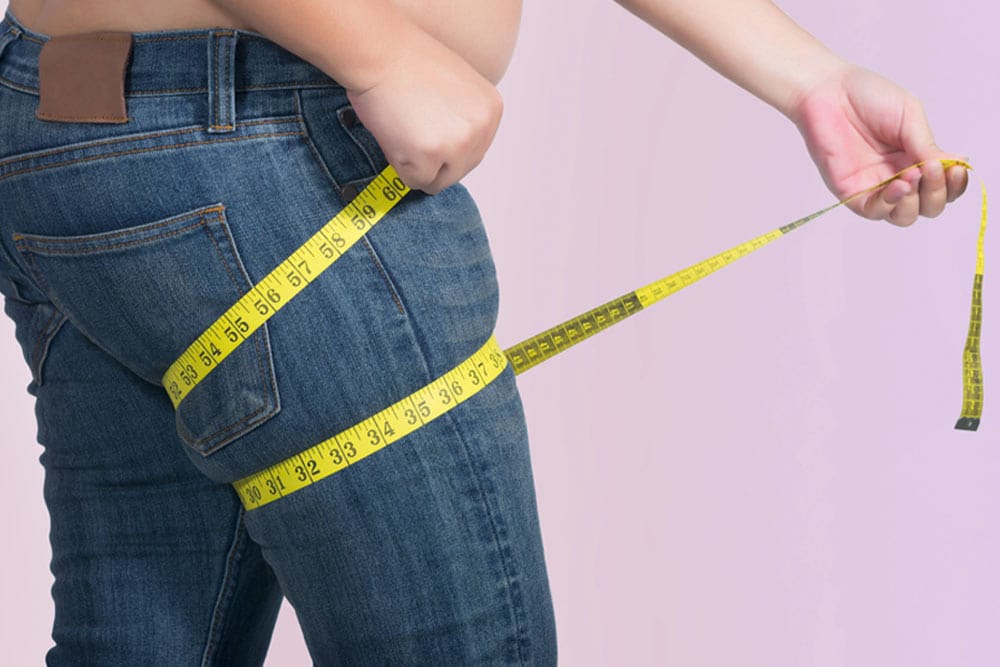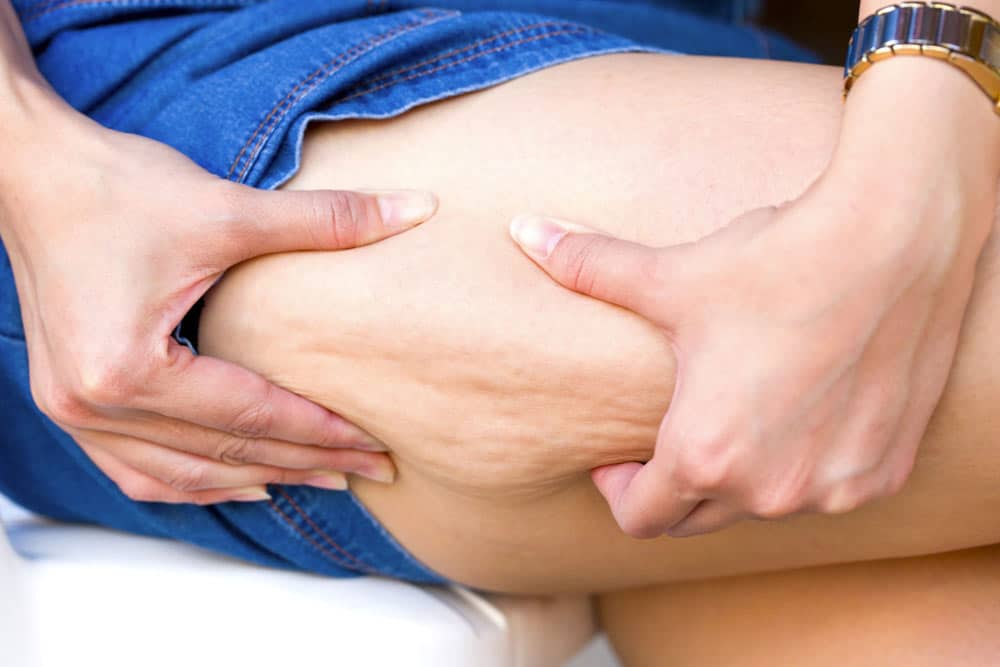
Body Surgery
What is lipedema?
Lipedema is a condition that affects almost exclusively women and rarely occurs in men. It appears in approximately 10% of women. It is a disease of the adipose tissue (we emphasize that it is a disease and not merely a cosmetic problem) that is also chronic and progressive, meaning that it worsens over time. Fortunately, at our clinic we offer the best treatment for lipedema in Málaga
Lipedema is caused by a pathological accumulation of fat. The most characteristic feature of lipedema is the disproportionate distribution of body fat in the extremities. It occurs especially in the legs, but can also occur in the arms, while the trunk remains in its normal state. The hands and feet are not affected.
Although lipedema was described as early as 1940, it attracted little attention for many years. Even now that its existence has been reinforced by more frequent media coverage, there is still considerable uncertainty as to how it can be correctly diagnosed. Lipedema is rarely diagnosed during a patient’s first visit to a doctor, and very often there is a delay of several years before it is diagnosed and specific treatment is initiated.
Current research is focused on why lipedema occurs and on developing tools to facilitate its correct diagnosis, as early diagnosis and prompt treatment are very important. At Clínica Doctora Yagües, we are specialists in the diagnosis of lipedema in Málaga
Surgery
Lipedema
Intervention time
Lipedema surgery lasts 2 to 3 hours and requires 1 day of hospitalization
Anesthesia
General or spinal anesthesia
Recovery
The postoperative period lasts 2 to 3 weeks
Request more information
Schedule an appointment for lipedema with Dr. Yagües!
It's time to take the next step. Our entire team of professionals is ready to give you the attention you need and ensure your experience is completely satisfactory.
Phone number
633 288 268

About Dr. María Lourdes Yagües
My dedication to medicine is a true calling. I discovered my vocation at the age of 14. I chose this specialty because it combines the scientific and the artistic. And my work allows me to help people. In consultations, we will address issues that go beyond the desire for cosmetic change, creating an atmosphere of tranquility, trust, security, and professionalism. I am proud to belong to some of the most prestigious societies worldwide, such as ASAPS, SECPRE, AECEP, SETGRA, and WOPRASS.
Contact
Why does lipedema appear? Causes and symptoms
The causes of lipedema are not clear. There are factors such as genetic inheritance and hormonal factors. It is believed that there is a genetic predisposition since up to 60% of patients have a first-degree relative also with lipedema.
As lipedema generally appears for the first time or intensifies during periods of hormonal change such as puberty, pregnancy, menopause, and with the use of contraceptives, etc., it is thought to be estrogen-mediated.
Criteria for diagnosing lipedema
- Increase in fatty tissue that is bilateral, symmetrical, and disproportionate in the limbs. There is more fat accumulated in the legs and/or arms compared to the trunk and abdomen. In addition, the accumulated fat has a firmer consistency than abdominal fat and sometimes presents with nodules. In about 30% of cases, not only the legs but also the arms are affected.
- Hands and feet are not affected, a characteristic known as the “cuff phenomenon.” There is no fat accumulation in the hands or feet. It is as if there were a cuff around the wrists and ankles preventing the spread of fat accumulation.
- Does not respond to diet or exercise. With dieting, the patient loses weight and volume in the face, chest, and abdomen, but the loss in the legs or arms is minimal. Fat in the limbs cannot be reduced through physical exercise either.
- Spontaneous pain or pain when pressing or touching. The patient feels pain in the arms or legs even while at rest. This pain can worsen with exercise and may make it impossible to perform physical activity.
- Pain when palpated. The patient experiences pain when pressure is applied to the legs or when being held by the arm. They tend to feel more sensitive than other people.
- Sensation of heaviness and tightness in the affected limbs. That feeling of swollen legs does not improve significantly when elevating them.
- Marked tendency to bruising. The patient often discovers bruises on the legs without knowing their cause, or they appear after minor trauma.
- May have family members with the same symptoms, even on the paternal side.
- Changes in the shape of the legs begin at puberty or during hormonal changes, such as pregnancy, menopause, or when taking oral contraceptives, etc.
- Worsening of symptoms throughout the day.
- Telangiectasias and visible vascular marks around the fat deposits.
If you present several of these characteristics, it is advisable to request an appointment at our aesthetic surgery clinic for the treatment of lipedema in Málaga, where we will evaluate your case. We frequently receive patients who have consulted several doctors and have been told that “it’s genetic,” “it’s tired legs,” “it’s due to poor circulation,” or “it’s obesity and you’re not following the diet.” After years of living with this condition, many patients feel misunderstood and frustrated.
At our clinic, we will carry out a comprehensive medical history — including background, progression, symptoms, etc. — and a physical examination to rule out other conditions that may present with similar symptoms, such as obesity, lipohypertrophy, or lymphedema, and to determine whether or not you have lipedema. With us, you will feel understood and supported at all times. We have treated many lipedema patients before and are specialists in both the diagnosis and treatment of lipedema in Málaga.
The onset of lipedema is usually triggered by hormonal changes such as puberty, pregnancy, or menopause; this helps us distinguish lipedema from obesity. The distinction can be difficult, as these conditions often appear together and the clinical picture can vary. However, even in an obese person, the characteristic symptoms of pain, tightness, and a tendency to bruising indicate that lipedema is also present.
If the diagnosis is positive, we will determine the degree and type of lipedema the patient has, and whether it is possible to start conservative treatment or whether a surgical treatment for lipedema using WAL liposuction in Málaga, performed at Doctora Yagües’ clinic, is more appropriate.
Three clinical stages of the disease have been described. These three stages are characterized by progressive changes in:
- The structure of the skin surface
Stage I: Smooth skin.
Stage II: Irregular or wavy skin.
Stage III: Markedly thickened and indurated skin. - And in the findings on palpation:
Stage I: Small nodules, reversible edema.
Stage II: Walnut-sized nodules, reversible or irreversible edema.
Stage III: Disfiguring fat deposits, macronodular changes, with accompanying lymphedema (swelling of the feet).
The symptoms and the patient’s subjective degree of suffering do not necessarily correlate with the stage of the disease. As a lipedema specialist, Dr. Yagües has treated many patients whose symptoms and level of discomfort were not directly related to the clinical stage of their condition.
The more advanced stages of lipedema are often associated with various complications. A fluid load that exceeds the capacity of the lymphatic system can cause secondary lymphedema (“lipo-lymphedema”) at any stage of the disease. Mechanical irritation from large fat deposits near the joints may macerate the skin; these deposits in the thighs and around the knee joints can also interfere with normal walking and cause secondary osteoarthritis. Other side effects include emotional distress and reduced self-esteem resulting from an appearance that does not conform to contemporary beauty standards.
After evaluation by Dr. Yagües, we will also request laboratory tests. In the study of a patient with lipedema, a blood test is necessary, as any hormonal or edema-promoting alterations found must also be treated. Kidney and liver disorders, hypothyroidism, pathological lipid profiles such as high cholesterol, and insulin resistance or diabetes should be ruled out through laboratory testing.
Additional diagnostic tests: other diagnostic procedures that require special equipment are used only to rule out other pathologies for differential diagnosis purposes, but they do not play an established role in the routine evaluation of lipedema.
The skin and subcutaneous tissue can be examined using ultrasound, CT scan (Computed Axial Tomography), or MRI (Magnetic Resonance Imaging).
Studies of the lymphatic system, such as lymphography or functional lymphatic scintigraphy, do not reveal any specific or pathognomonic findings of lipedema.
In cases of a confirmed lipedema diagnosis, if surgical intervention is required to treat it through WAL liposuction in Málaga, it is essential to perform a lower limb Doppler ultrasound beforehand to rule out the presence of varicose veins. If varicose veins are present, they must be evaluated and treated by a vascular surgeon before the liposuction procedure.

To avoid frustration, the doctor should inform the patient that the main goal of conservative treatment is not to improve the appearance of the limbs, but to relieve symptoms.
Although conservative treatment results in only a small reduction in tissue volume, between 5% and 10%, it does reduce sensitivity, pain on pressure, and the feeling of tightness in the limbs. Another goal of conservative treatment for lipedema is to prevent secondary complications such as skin lesions when the disease is advanced.
There is also no convincing evidence suggesting that classical conservative treatment prevents the progression of lipedema.
Depending on the case, these measures may be a first step in treatment or may form part of a combined approach with surgery.
At Clínica Doctora Yagües for the treatment of lipedema in Málaga, we inform patients that the initiation, scope, and duration of treatment must be agreed upon with the patient, taking into account the individual degree of suffering caused by the disease. The classic components of conservative management are as follows:
- Appropriate compression therapy with custom-made flat-knit compression garments (compression classes II–III). This consists of wearing lymphatic compression stockings, type II, in full pantyhose format for about 12–16 hours each day. They are purchased in an orthopedic supply store since they must be custom-made. The effects take a few weeks to appear; after about 2–4 weeks, the patient will already notice improvement in pain and heaviness, although the reduction in limb volume will be modest.
- Physiotherapy and exercise therapy. Exercise therapy should be adapted to the individual needs of the patient and the stage of the disease. Many lipedema patients find it difficult to exercise due to the weight of their limbs, the accumulation of fat around the joints that limits movement, or the pain caused by friction or movement itself. In general, beneficial types of exercise are those characterized by controlled, cyclic movements such as walking or running, which activate the calf muscle pump but do not cause excessive tissue trauma. Since the pressure gradient under water helps reduce edema, water-based sports such as swimming, aqua jogging, and water gymnastics are recommended at least three times a week. Exercise in water also places less strain on the joints of overweight patients.
- Dietary counseling and weight management:
Diet modification. There is no evidence-based specific diet for patients with lipedema. Current dietary approaches are generally based on empirical data and are designed to reduce body weight through low-calorie nutrition, inhibit systemic inflammation with antioxidant and anti-inflammatory components, and promote fluid elimination. Since many lipedema patients also suffer from eating disorders, dietary modification should be carried out under the supervision of a psychologist if necessary.
Weight control. Lipedema patients are at increased risk of developing morbid obesity. Furthermore, being overweight worsens the manifestations of lipedema. The pathological subcutaneous fat in lipedema is considered diet-resistant, but weight normalization may nonetheless improve symptoms. Obesity should be treated, if necessary, in accordance with current guidelines. - Patient education on self-care and psychosocial therapy. At Clínica Doctora Yagües, we provide patients with comprehensive information about the nature of the disease and the fact that it is chronic. They are informed about all treatment options and about ways in which they can actively influence the course of the disease themselves. We also offer professional support options to help patients cope emotionally with the condition. Since lipedema is a chronic and progressive disease, patients will also receive appropriate informational materials as soon as the diagnosis is made, along with contact details for relevant self-help organizations. If necessary, the patient will also be educated about complex decongestive therapy.
- Manual lymphatic drainage on a regular basis if necessary.

Many women want to know if lipedema has a cure or solution, if there is a treatment that can put an end to the disease. There are conservative measures that can relieve discomfort, such as wearing compression stockings for 12-16 hours a day and exercising in water three or four times a week, but the most definitive treatment is surgery. These diseased fat cells must be removed through liposuction . There are different liposuction techniques, but for lipedema, the most suitable is WAL liposuction, or water-assisted liposuction, which is the most advanced technique and causes the least damage to blood vessels and tissues.
If symptoms persist and impair the patient’s quality of life despite adequate conservative management, the possible indication for liposuction should be evaluated
Lipedema surgery in Malaga helps eliminate both subjective criteria, such as pain, tightness, bruising, and quality of life, and objective criteria, such as leg thickness. We consulted several medical studies to determine the complication rate during lipedema surgery and concluded that it was low, showing a similar level to the complications that can occur in patients who underwent liposuction and did not have lipedema (1% hemorrhage, 4% erysipelas, 4.5% wound infection).
Lipedema surgery focuses on removing diseased adipose tissue. A patient with lipedema has much more fibrous and compact adipose tissue than normal, and the areas to be treated are more sensitive. Therefore, surgeries such as liposculpture or conventional liposuction, which we all know, and other less common types of liposuction such as laser liposuction, VASER ultrasonic liposuction, or laser-assisted liposuction are not the most suitable for treating a patient with lipedema. The best technique for lipedema surgery is, without a doubt, Water-jet Assisted Liposuction, also known as the WAL technique or WAL liposuction, and it is the one we perform at our clinic for the treatment of lipedema in Malaga.
- Reduction of pain both at rest and with pressure. In many cases, it disappears completely.
- Improved mobility. The patient will feel lighter because removing the fat reduces pressure on the tissues and improves blood and lymphatic circulation. The patient can move more agilely because removing fatty tissue from the joints increases their mobility and flexibility. It also contributes to reducing the weight the joints bear. The patient can begin to practice sports without discomfort or pain. As the limbs will be lighter due to less weight, the patient will be able to participate in sports that were previously impossible.
- By removing a large amount of diseased adipose tissue, the progression to more advanced stages of the disease is halted.






